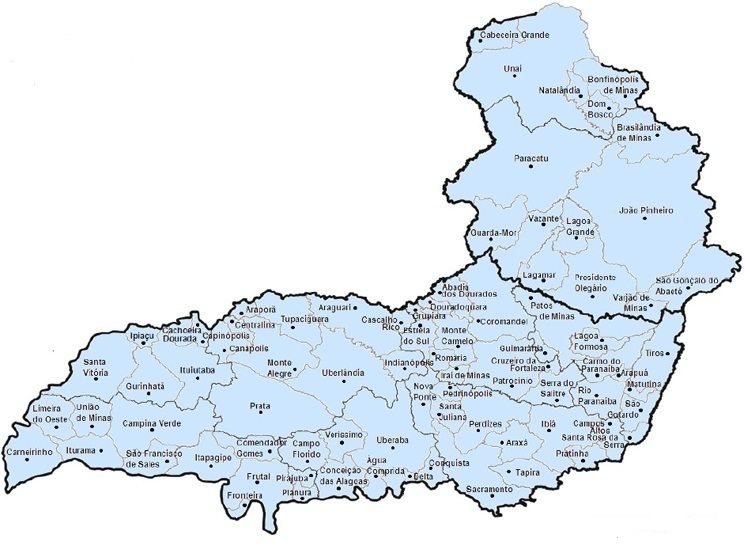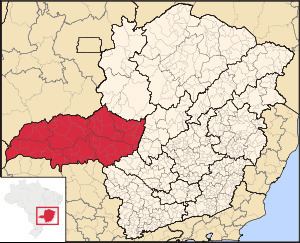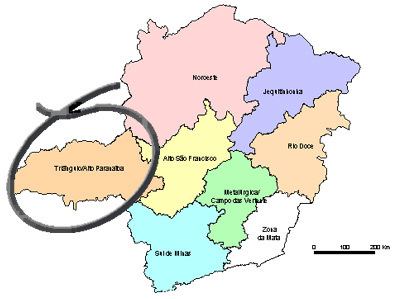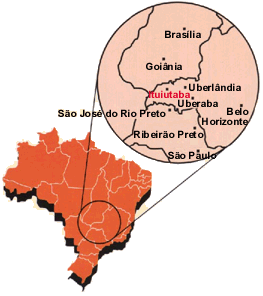 | ||
Gino e geno meu tri ngulo mineiro
The Triângulo Mineiro ([tɾiˈɐ̃ɡulu miˈnejru]) is an area in the west of the state of Minas Gerais, Brazil. It is one of the 10 planning regions of the state. Its area is 93,500 km2 (slightly larger than Portugal or Hungary) and is bounded by the Serra da Canastra and Marcela to the east, by Sao Paulo to the south, Goiás to the north, and to the west by the junction of the rivers Grande and Paranaíba. The name means Minas Gerais Triangle, as the junction of these rivers forms a triangle.
Contents

It is known as a highly developed region, well watered, with rich pastures producing some of the best beef and dairy cattle in the country. Three of the most important cities of Minas Gerais are located here: Uberlândia, Uberaba and Patos de Minas. They are known for their modern, excellent infrastructure and high living standards and have excellent motorway and rail links to the major centers of the country.

The economy is fuelled by the agribusinesses of meat production, coffee, corn, soybeans, and sugarcane. Other activities are wholesale commerce and telecommunications. Many large multinationals and domestic companies have invested in the region.

The region is famous for fairs like Expozebu in Uberaba, Fenamilho in Patos de Minas and Feniub in Uberlândia.

Tri ngulo mineiro mg
Paleontology

In Paleontology the region is very important for the discovery of the Maxakalisaurus topai (Dinoprata) fossils, a genus of titanosaurid dinosaur, found 45 kilometers (28 mi) from the city of Prata (Triângulo Mineiro), in the state of Minas Gerais in 1998. It was closely related to Saltasaurus, a sauropod considered unusual because it had evolved apparently defensive traits, including bony plates on its skin and vertical plates along its spine; such osteoderms have also been found for Maxakalisaurus.
The genus name is derived from the tribe of the Maxakali; Topa is one of their divinities.

The Maxakalisaurus fossils belonged to an animal about 13 meters (43.3 ft) long, with an estimated weight of 9 tons, although, according to paleontologist Alexander Kellner, it could reach a length of approximately 20 meters (65 ft). It had a long neck and tail, ridged teeth (unusual among sauropods) and lived about 80 million years ago. Because sauropods seem to have lacked significant competition in South America, they evolved there with greater diversity and more unusual traits than elsewhere in the world.Its replics is exposed at the Museu Nacional in Rio de Janeiro, since August 28, 2006.
Major cities
All include the total municipality population:
